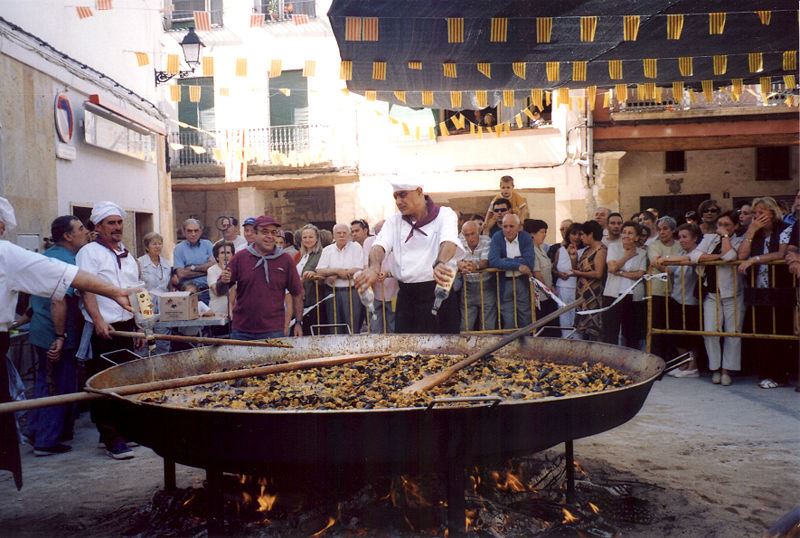Spain is a Catholic country, and its people revere their saints. Every child is given a name, plus a saint’s name, which is why you may come across unusual combinations of male and female names, such as Jose Maria. The child’s Saint’s Day is more important than the actual date of birth, and there will be great family celebrations, which everyone will take pains to attend. Family members who have moved away will arrange their holidays so as not to miss their parents’ and grandparents’ Saints Day celebrations.
All places in Spain also have a patron saint, and the whole town or village makes an occasion of Saint’s Day. Whatever your religious persuasion, I’d recommend you go along to your village or town’s Saint’s Day fiesta. The day begins with a Silent Procession, followed by Mass. After Mass comes the celebration, which almost always involves a giant paella for everyone, music and maybe dancing. Saint’s Day is not exclusive to the indigenous population, and you will receive a typically warm Spanish welcome. Enjoy yourself, but think about what the day means to the locals as well.
You don’t want to cause unwitting offence to your new neighbours, so here are a few pointers to ensure everyone gets the most from Saint’s Day. First and foremost, remember this is a religious occasion, not a spectacle put on for tourists and foreign residents, so dress accordingly.
For this special day in your town’s calendar, dump the vest and shorts and halter necked sundress, and dress as you would for a summer wedding or christening. It’s appropriate for the occasion and sends a message to the locals that you respect the significance and religious importance of the day. And avoid alcohol until the religious element of the fiesta is over - there’ll be plenty of time to make up for it later.
Of course, you’ll probably want to take photos, but be discreet about it. Using the wedding analogy again, don’t stand in front and hold up proceedings; position yourself where you can get good photos without intruding on the solemnity of the procession. And please try to be silent as the procession passes. The 'silent' bit is ironic really, because although those in the procession may be silent, there is often a band playing and celebratory fire crackers going off as the procession makes its way around town, but that's the way it works here.
Explain to children how important it is to be respectful, and if you can’t trust your little darlings to restrain themselves from causing mayhem for a while, it’s best to make other arrangements for them. Spaniards love children, but they also expect their behaviour to be appropriate to the occasion, even from a fairly young age.
The procession will usually be led by a statue of the saint in question. It’s fine to follow the procession, but walk slightly to one side, not directly in line with the statue. If you ‘follow the leader,’ you are treading in the footsteps of the saint, and to your Spanish hosts, this is sacrilege. The Silent Procession experience is profound, and even if you do not consider yourself religious, I’m sure you’ll find the spirituality of the occasion, and the opportunity for quiet reflection, extremely moving.
Everyone will be there, so if you’re newly arrived, it’s a great opportunity to meet your new neighbours and practice your Spanish. But don’t let your lack of language skills keep you away – a smile is a smile in any language!
